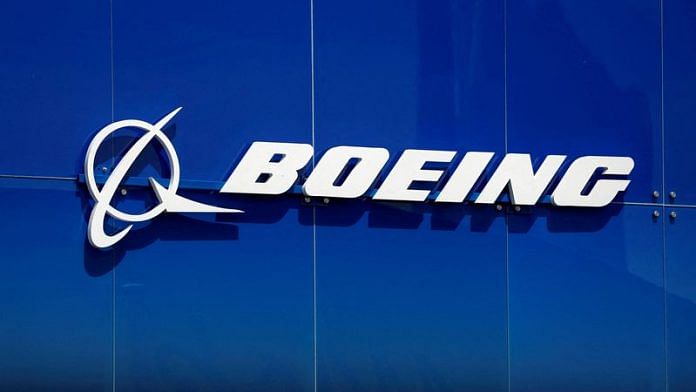Thank you dear subscribers, we are overwhelmed with your response.
Your Turn is a unique section from ThePrint featuring points of view from its subscribers. If you are a subscriber, have a point of view, please send it to us. If not, do subscribe here: https://theprint.in/
On 05th June 2024, Sunita Williams and Butch Willmore embarked on a space mission aboard Boeing Starliner. They were expected to return back after a week, but was stuck for 286 days in space station, as Boeing spacecraft suffered from helium leakages and thruster malfunctions.
Despite assurances of safety from Boeing, it was rendered unfit for a crew mission by NASA. Eventually, the Starliner returned uncrewed in September 2024. While, its crew returned on 18th March, 2025 aboard SpaceX Dragon Crew-9.
In 2014, NASA chose Boeing Starliner and SpaceX Crew Dragon to develop commercial spacecraft for its crew missions to International Space Centre. It awarded fixed price contract of $4.2 billion to Boeing, while SpaceX being considered as a “start-up” was awarded only $2.6 billion, with same contractual obligations. Both companies were expected to perform six crewed missions to space station after obtaining certification for their spacecraft from NASA.
Boeing struggles does not seem to end
US-based Boeing was started by William E Boeing in 1916. It has been at the forefront of commercial and spacecraft technologies within US and globally. However, the company has been witnessing slate of problems since crashes of 737 Max in 2018 and 2019. Boeing was found guilty of negligence for the crashes and had to settle for $2.5 billion in penalties.
In commercial aircraft, rival Airbus have surged ahead of Boeing in orderbook and deliveries since 2019. In 2024, Airbus delivered 766 aircrafts against 348 of Boeing, outperforming latter for fifth consecutive year.
Boeing has reported cumulative loss of $2 billion under its commercial space program since 2016. In 2024 alone, the Starliner program reported its highest ever loss of $523 million. The company suspects similar losses may occur in future as well.
Boeing is currently seeking certification from NASA for its commercial crew program for which it must perform additional trials to ensure safety and reliability. According to Steve Stich, Chief of NASA’s Commercial Crew Program, “Boeing may need to conduct an extra uncrewed test mission before certification”, its fourth mission following two uncrewed tests (in 2019 and 2022) and the crewed mission in June 2024.
Stich further added, “What we’d like to do is that one flight and then get into a crew rotation flight. So, the next flight would really test all the changes we’re making to the vehicle, and then the next flight beyond that, we really need to get Boeing into a crew rotation. So, that’s the strategy.”
SpaceX, a “start-up” outshining
In September 2024, NASA decided to use SpaceX Dragon Crew-9 to bring back stranded Starliner crew. The spacecraft reached ISS with launch members – Nick Hague and Aleksandr Grobunov along with two open seats for Williams and Willmore. All four returned to Earth on 18th March, 2025.
Owing to its success in crew missions, NASA extended SpaceX contract of commercial space program given its reliability, efficiency and cost-effectiveness. Elon Musk owned company received two contract extensions comprising of eight more crewed missions to space station until 2030.
Under the first extension, missions Crew-7 to Crew-9 will occur at a cost of $285.7 million per flight; under second extension, Crew-10 to Crew-14 at $288 million each. With these extensions, SpaceX total contractual value with NASA reached $4.93 billion, surpassing Boeing initial contract value of $4.2 billion for just six missions.
As of 2025, the SpaceX have completed ten crew missions, with Crew-10 currently docked at space station.
NASA wants Boeing to catch-up
NASA wants to prepare for redundancy by having two crew spacecraft under its commercial program. “Two different spacecraft with different procedures provide backup if one is sidelined due to safety or other issues,” explains Steve Stich.
Joel Montalbano, NASA’s deputy associate administrator for space operations, noted that this situation offers lessons learned: “The flexibility of our commercial providers is crucial. If we have a problem with one vehicle, we need to be able to bring people home using another.”
With current International Space Station (ISS) set to retire around 2030, NASA anticipates more crew missions. Having two spacecrafts from different companies provide cushion to NASA.
Additionally, NASA seeks to maintain competition between SpaceX and Boeing due to potential conflicts of interest. Over the past decade, SpaceX has received federal contracts worth $18 billion with $13 billion from NASA alone.
Given Elon Musk’s proximity to President Trump, an independent agency like NASA cannot be seen as favoring one contractor over another; thus, keeping Boeing active is essential for maintaining balance within the aerospace industry.
These pieces are being published as they have been received – they have not been edited/fact-checked by ThePrint.


